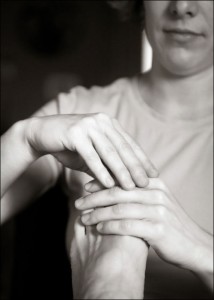What is Reflexology?
 Reflexology is an ancient method of activating the body’s inherent healing abilities based on the theory of energy zones. Energy zones are thought to run through the human body with corresponding reflex point(s) located in/on specific areas of the body and the feet. Stimulation of these reflex points is thought to assist in maintaining homeostasis.
Reflexology is an ancient method of activating the body’s inherent healing abilities based on the theory of energy zones. Energy zones are thought to run through the human body with corresponding reflex point(s) located in/on specific areas of the body and the feet. Stimulation of these reflex points is thought to assist in maintaining homeostasis.
Some have called reflexology an art. Others consider it a science. Effective practice of reflexology requires both: Knowledge of the structure and function of the human body, very specialized skills and techniques, as well as insight and intuition. The roots of reflexology are lost in ancient History with only small glimpses of this science available today. The most accepted theory puts forth the idea that is has both Egyptian and Chines origins.
If the body is subjected to regular doses of stress over time, the effects are cumulative and it becomes more and more difficult to return to homeostasis. Some researchers estimate that this if the root cause of 80% of all illness.
Why work the feet?
We have 7,200 nerve endings on the soles of our feet. This makes them quite sensitive and responsive to the sensory input of reflexology. The feet do not lie. The foot is one of the most complex organs in the body. It is meant to move in more than 150 different ways. There are 206 bones in the body – 52 of them are in the feet (26 in each foot).
Effects and Benefits of Reflexology treatment:
- Reduce stress and tension, and induce deep relaxation
- Improve local and systemic circulation
- Cleanse the body of toxins and impurities
- Assist in balancing all the body’s systems – (Homeostasis)
- Revitalize energy (chi)
- Stimulate creativity and productivity
- Nurture relationships
- Rewarding to the practitioner and the client
- Complimentary and preventative health care
A reflexology session is likely to generate several physiological responses. Some may take place during the session while others may present after the session. Physiological responses that occur after a session or between sessions usually last only a day or two and indicate the body is returning to a state of homeostasis. A few of the most common responses:
- Tiredness
- Energized
- Change in sleeping pattern
- Change in skin activity
- Frequent urination
- Increased bowel movements
- Increased mucus
- Dormant illness
- Emotional or psychological releases may result in crying
